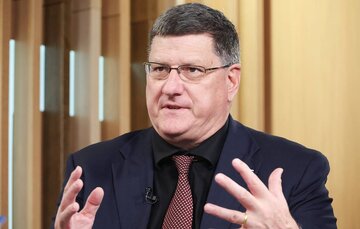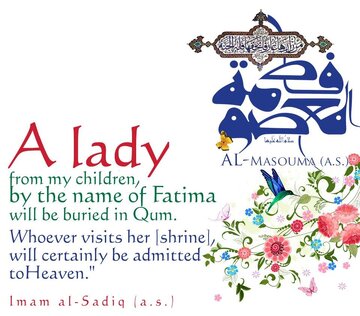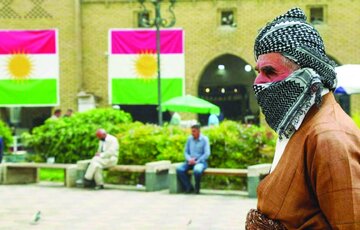AhlulBayt News Agency (ABNA): William Paterson University historian John Livingston wrote in Iran Daily newspaper that the lands of Islam were once graced with proud cities in a high civilization that for over half a millennium led the world in intellectual productivity. Between roughly 800 and 1500 AD, Islamic civilization was accepted as the world’s uncontested leader in science and its affiliated branches.
John Livingston's article in Iran Daily is as follows:
Rise and fall of the Islamic civilization
The lands of Islam were once graced with proud cities in a high civilization that for over half a millennium led the world in intellectual productivity. Between roughly 800 and 1500 AD, Islamic civilization was accepted as the world’s uncontested leader in science and its affiliated branches.
Around 1130, European scholars began translating Arabic scientific, medical and philosophical texts to Latin. Sometime between 1400 and 1500, the impetus of scientific study in the civilization of Latin Christendom reached a level comparable to that of its traditional Muslim rival. But there was a difference. Whereas the interest and investment in science in the West were on the rise, in the East they were in decline, and had been for centuries. The science and technology that through the early Arab conquests had been inherited and translated during Islam’s youth and then had been assimilated and expanded during the civilization’s mature years, were in the 12th and 13th centuries well along the way of losing social standing and being replaced by both mystical devotion and studies more stringently oriented to a narrow interpretation of religious orthodoxy, and this at the very time that, in Spain, Italy and Sicily, Arabic science, medicine and philosophy were being translated to Latin and assimilated. With the fading importance of this scientific and philosophical heritage in the lands of Islam went not only the creative spirit of curiosity regarding physical nature, but also the splendid technique of contriving mechanical devices in which the Muslims had been so adept, and which amazed visitors to the caliph’s court.
Story of the Ottomans
The inversion of mental openness and creativity did not bring about an immediate eclipse of Muslim military glory, for a spark of that same flexibility and ease of borrowing, of adapting and improving, was exhibited again by another young Muslim power, the Ottomans, in the 14th and 15th centuries, when artillery was taken from the West. In the 16th century, while vast stretches of Christian territory in Europe were under Ottoman sway, the expansion of science in the West, originally fueled by the Latin absorption of Arabic-Muslim learning in the 12th, 13th and 14th centuries, continued quietly, steadily and far from the battlefields, building western Europe’s human potential, in spite of the internal discord of political and religious strife in the 16th and 17th centuries and the Church’s humiliation of Galileo.
It was not until the late 17th century, when the forward progress of Muslim arms had for a second time come to a halt at the gates of Vienna and then suffered a series of shattering reversals, that a few officials in the sultan’s court were at last able to perceive, and admit to, a shift in military power. It did not take long before it also dawned upon them that the shift had something to do with technological expertise and scientific knowledge. This was a grave revelation accepted with great reluctance and hesitation. It would take until the early 18th century, with the shock of more defeat and lost territory.
Frightened by this shift that was so out of order in the affairs of the world, a world designed and controlled by God, the sultan and his ministers sent a mission to the West to see what it was that made these Frankish ruffians so strong after having been so weak for so long. It was discovered that military power was the product of better technology, which in turn was the product of a technique of social and political organization, of planning and execution surpassing anything Muslims possessed. Power had to do with factories and education and the printing press and science.
Henceforth, the Ottoman ruling elite, rather, the party in the elite urging innovative reform, became increasingly more curious about the West. But for most Muslims it was too traumatic to contemplate. Steeped in denial, they claimed it was not Frankish strength but Muslim weakness that caused the change. Many in high places refused to accept such observations and conclusions and rejected with religious passion the reformist party’s judgment that the empire must accept Western methods and inventions or perish. Whatever it was, it had to be set right or the whole of Islamdom would be swept up by the relentless onslaught of Britain, France, Austria and Russia.
Then there came the reform-minded
Reforming the old ways and introducing new ones came with great difficulty and demanded a high price, socially, culturally and materially. Reformers who tried to revive the old heritage of science and introduce the new science of the West in order to face the existential challenge were accused by both religious authorities and political rivals of destroying Islam and of being agents of the West. Reformers faced the daunting task of reviving the lost spirit of scientific creativity that had given birth to what became the Islamic scientific heritage, which the Latin West had centuries earlier translated into its own cultural traditions and then transformed into something original in the Scientific Revolution of the 17th century, with a final revolutionary twist provided by Darwin in the 19th century.
Two centuries of reform did not save the Ottoman Empire. From the ashes of the Ottoman Empire a secular Turkish republic dedicated to westernized reform emerged. To the east, Iran was under British economic control and partial occupation. The Muslims of India had for more than a century been under direct British control, with those of Central Asia under first the tsars, then their Soviet successors. European powers carved new states out of the conquered Arab lands and drew the borders as they wanted. It appeared that Islam’s humiliation was complete; but not quite. The rest of the 20th century and the start of the 21st would be far more unkind to the Arabs and peoples of the wider Islamic world in their relations and interactions with the West.
Widening gaps during the 20th Century
As the mounting friction of 19th century nationalism, imperialism, militarism and economic rivalry boiled into the Great War between the European powers, the gap in scientific knowledge and technological expertise between Islamdom and the West continued to widen at an accelerated pace and never stopped.
Middle Eastern governments have clearly failed to adopt the science, technology and industry that self-defense demands in the modern world. They prefer to buy it off the shelf from industrialized countries, and as a result, they are at their mercy.
Many overwhelming questions
How is it that after centuries of brilliant scientific achievement the tradition of science all but disappeared in medieval Muslim society?
Did Arabs and Muslims really create science or just borrow and imitate?
If they did create, then what original science came from them to deserve the praise that their civilization has received from those versed in the history of science?
These are but some of the many questions that beg for answers in the minds of those who delve into the dramatic rise and fall of scientific creativity in the Islamic experience and of the difficulties modern Muslim states have had in reviving that creative impulse.
Sustaining these hefty questions is a drama, both uplifting and depressing, but always astonishing.
With respect to Islam, it would be hard to exaggerate the poignancy of a civilization, a world leader in science, medicine and military power for close to a millennium, that so completely, as it would appear, lost the critical spirit of scientific inquiry and then failed to recapture that energy even as its millennial enemy relentlessly advanced on the Muslim heartlands and hallowed sanctuaries, swallowing up land after Islamic land, as if Muslims had destined themselves to succumb through one colossal act of negation in order to remain heroically faithful to a fantasized past of purity, greatness and glory.
Instead of acting to put science and technology in the service of the state for survival as defeat followed defeat and economies floundered, as they do to this day, many Muslims and Muslim states ignored or rejected modern science, as the West continued to advance. For anyone familiar with the achievement of the men who contributed to science in Islamic civilization, the fall from grace and subsequent failure of their modern descendants to recapture the contemporary version of this lost heritage, and the creative spirit that produced it, is tragic. Trying to determine when and how the loss of creative genius began in the long trajectory of Muslim civilization is like gathering mercury.
Muslims’ early route to civilization
The cradle of Muslim civilization was Arabia, more precisely, western Arabia, in the cities of Mecca and Medina, the former living on international trade, the second on local agriculture.
Classical Islamic civilization was a synthesis of elements from two worlds: Quranic dicta, Arab tribal norms idealized and sanctified in the body of transmitted and collected traditions recording what the Prophet (PBUH) purportedly had said and done relevant to life’s myriad problems, and of the social, political, and intellectual traditions of the higher civilizations.
The forms of higher civilization were absent in even the most advanced of pre-Islamic Arabian cities. The high culture of Muslim literature, music, science, medicine, mathematics, philosophy, geography, historiography and architecture arose later in the conquered territories of the Byzantines and the Sassanid, in Syria, Egypt, Mesopotamia, Iran and Central Asia, where civilizations extended back to the Bronze Age. The continuing traditions of these pre-Islamic civilizations became the inheritance from which arose the literary, artistic and intellectual greatness of Islamdom.
Islamic civilization was an enterprise shared by all Muslims, whether Arabs or non-Arab converts to Islam, and by non-Muslims as well. Science, philosophy and medicine, along with the trade and agriculture that went into supporting their practitioners through royal patronage, were professions open to all: Jews, Christians, and even the star-worshipping pagans of al-Harran in northern Iraq.
Persian version of Islamic civilization
In the regions of Iranian cultural ascendance, Islamization transcended Arabization, and from the 10th century on, a distinct Persian style of Islamic civilization evolved in those lands. The Iranians played a vital part in Abbasid courtly life as viziers, governors, generals, essayists, poets, scribes, physicians, astronomers. They by the middle of the 8th century figured among the greatest composers of Arabic poetry and belles lettres and contributors to Arabic historiography, science, philosophy, medicine.
Iranians were the first to analyze Arabic constructions to formulate a logically systematized set of grammatical rules to facilitate learning the language by non-Arabs. They wrote the first manuals for the training of government scribes, clerks and courtiers, establishing the forms of Abbasid absolutism, courtly life and bureaucracy on Sassanid models.
The Iranian contribution was fundamental to the evolution of classical Islamic civilization in every facet of its genius, but it should be stressed that members of all ethnic and religious groups within the empire participated in the grand enterprise of intellectual renaissance, of refining and expanding the scientific, philosophical and medical heritage that had come with the conquests and that formed the cerebral core of the high period of Islamic civilization, just as Muslims of all ethnic origins, Arab and non-Arab converts and their descendants contributed to the evolution of Islam as a religion and comprehensive way of life through interpretation of the Quran and the analysis and evaluation of the Prophetic Traditions, equally with legal commentary and articulation of theological and mystical understandings of the Prophetic message.
Sisterhood of Abrahamic religions in the rise of Islamic civilization
The studies of the science, philosophy, medicine and mathematics that were patronized by Muslim rulers, and that were later woven into a religio-rational world view, opened the way to the Muslim world’s Christians and Jews, whose own particular religious views were framed in the same rational paradigms that derived ultimately from Aristotelian and Neoplatonic sources.
On this level the three religions were truly sisters, which made for an easy collegiality. Religion was the primal bond of commitment that held these diverse peoples together across the lands of Islam. As did science in its own realm of endeavor, Islam transcended ethnic and linguistic differences.
Arabic, the language of the Quran, of the angels and of the mind of God, was the scriptural and intellectual thread that stitched the many peoples together in mental patterns that, with religion underlying them all, gave unity within a legion of cultural variations.
/129





